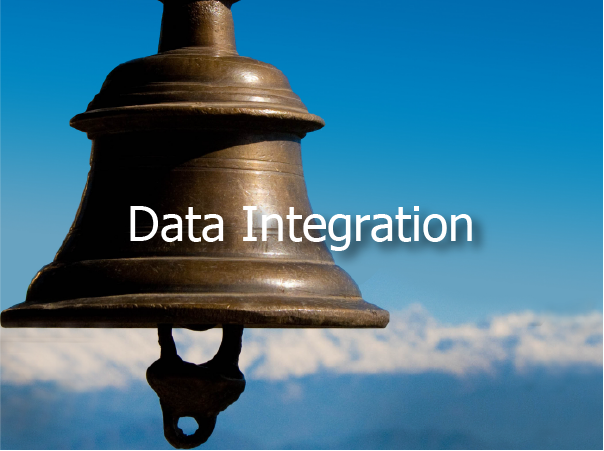Data Governance (DG) is a business program and bedrock that supports harmonized data activities across the organization. It accomplishes this goal as a formalized framework implemented to the specifications of a corporate Data Strategy.
Applying governance, as a whole, requires connecting different components – such as roles, processes, communications, metrics, and tools – to increase the likelihood that the right data flows to the right resources at the right time. Each DG element works with the others to guide shared data usage and access internally and with third parties through a framework.
Consequently, Data Governance gives data consumers a consistent experience and a more straightforward pathway, based on decision rights and accountabilities, to agree to and resolve questions and issues about shared data. DG’s authority or control keeps its services aligned with the corporate Data Strategy.
In the meantime, governance adapts to changing business circumstances, like new technology. To do so, DG runs from an agreed-upon model that evolves agilely through business unit representation and organizational alignment.
Data Governance Bootcamp
Learn techniques to implement and manage a data governance program.

Data Governance Defined
Data Governance is frequently confused with Data Management, but the two practices are distinct. According to DAMA International, Data Governance is “the exercise of authority and control (planning, monitoring, and enforcement) over the management of data assets.” Meanwhile, the Data Governance Institute defines it as “a system of decision rights and accountabilities for information-related processes, executed according to agreed-upon models which describe who can take what actions with what information, and when, under what circumstances, using what methods.” Lastly, Gartner Glossary lists it as “the specification of decision rights and accountability framework to ensure the appropriate behavior in the valuation, creation, consumption, and control of data and analytics.”
While automated tools help governance and are necessary, they do not define it. Governance is a program coordinating people, technology, and activities throughout the enterprise.
Benefits of Data Governance
Data Governance’s most significant benefit is coherent coordination among different business areas using the same data and more effective teamwork around that data usage and accessibility. A company cannot provide the data required to operate without a functioning enterprise-wide governance program.
Some internal departments or projects may get the information they need to complete their work and comply with regulations with ineffective or no governance. However, gaps remain in other sections. How they handle data may counter the overarching Data Strategy, resulting in a lack of data trustworthiness or awareness among different business units.
In contrast, adequate Data Governance reduces risks and increases the organization’s opportunities. This greater advantage translates to results like:
- Lowered costs associated with other areas of Data Management: For example, DG reduces the amount of duplicated and inaccurate data among divisions.
- Accurate procedures around regulation and compliance activities: For example, the corporation can provide an exact data lineage to regulators.
- Improved transparency within shared data activities: Governance ensures regulators and employees have confidence that the company handles personally identifiable information legally.
- Better training and educational practices around Data Management: Department representatives engaged in governance have information to show teammates how to correct Data Quality problems in their work.
- Increased value of an organization’s data: DG standardizes enterprise-wide data to be sold to another company as training materials for their AI.
- Standardized data systems, policies, and procedures: For example, DG ensures that data used for verification is handled the same way across units and does not corrupt data in production.
- Better resolution of past and current data issues: DG ensures quarterly sales reporting happens consistently without confusion that generates a repeated ticket.
- Monitoring and tracking mechanisms for Data Quality and other data-related activities: DG sets procedures around data profiling and enhancements so that a more significant proportion of company data is accurate.
- Growth in the enterprise’s revenue: Through DG, business analysts get reliable data highlighting new services their customers want and for which they would pay more money.
How Does a Data Governance Program Work?
Everyone in an organization is responsible for a functioning Data Governance program. The details depend on the job title, level of DG engagement, and collaboration with others. For example, a chief data officer (CDO) or a governance lead ensures that governance operates appropriately. They cannot do so without an adequate budget from corporate finance.
Data Governance programs span four tiers of expected deliverables and accountability: executive, strategic, tactical, and operational. A support layer provides the needed resources for each DG layer to achieve its objective.
Executive Practices
The executive level includes leadership at the organization’s top, who create the Data Strategy and initiate, assess, and fund the governance program. Any communication with data happens at a very high level, including metrics about the overall DG success in meeting Data Strategy objectives.
Executives ensure a transparent and trustworthy message gets relayed about governance to the organization. They stay informed about DG through steering committee meetings. Additionally, software tools give these high-level managers insights into operational efficiencies, challenges, and capabilities to comply with regulations.
Strategic Practices
The Data Governance strategic level consists of representatives from across all business functions. They typically meet as a DG committee to set up, activate and evaluate processes, communications, metrics, and tools.
This tier reports progress and any unresolved issues or suggestions to the executive level while passing along decisions to department representatives at the tactical level. When governance problems or opportunities come up with a company division, the strategic level provides a forum to explore and learn more. Those in the strategic group work toward clarifying DG policies through dialog, metrics, empathy, and adherence to the Data Strategy.
Metrics and tooling assist the strategic team in making timely Data Governance decisions and resolving escalations. If disagreements continue, then the executive level makes the final decision about the DG procedure.
Tactical Practices
At the tactical level, Data Governance identifies and resolves data definitions, production, and usage issues across business teams. The people at this level represent their business unit and are typically subject matter experts (SMEs).
As tacticians, SMEs ensure that the policies and procedures recommended through strategic Data Governance decisions are implemented correctly and as intended. They use metrics to assess how well the organization meets Data Quality or other DG deliverables.
These SMEs report their findings to those at the strategic level. Additionally, SMEs take steps to settle issues that arise.
They fix discrepancies by matching data creations, transformations, storage, updates, and deletions to Data Governance rules and standards and train their teammates and managers in data-related handling. Often SMEs use Data Governance tools to apply rules and address common tactical concerns automatically.
When their team members have questions, concerns, or general comments about Data Governance implementations, they communicate these to the SME tacticians. Then the SMEs take any outstanding items to the strategic level for resolution.
Operational Practices
The operational level covers data stewardship, where everyone and anyone who creates, uses, stores, defines, archives, manages, or deletes data in their work does so according to Data Governance processes.
Note that everyone in the organization falls into the operational tier and is a data steward. Data stewards use Data Governance metrics and tools to align their activities with Data Governance objectives.
They are responsible for communicating Data Governance progress and challenges to the SMEs at the tactical level. Additionally, they work with the organization to solve any resulting inefficiencies.
Support Practices
Those at the support level run the Data Governance program along with assistance from partners. They may include a Data Governance lead or a CDO responsible for running the Data Governance program and corporate resources, like security. Support roles collaborate at one or more executives, strategic, tactical, or operational levels in governance efforts.
Data Governance’s support activities typically occur as part of a person’s job responsibilities. For example, HR, responsible for onboarding new employees, would need to train them in DG practices as part of that process.
Those in support positions have access to or work with governance metrics, tools, and communications as their role needs. They are responsible for aligning their work for DG with the Data Strategy.
Applied Data Governance Body of Knowledge
Gain access to our comprehensive reference guide developed by leading data governance experts.

Different Types of Data Governance Programs
The type of governance program works best when it seamlessly integrates with an organization’s culture and business practices. That said, governance programs generally fall into four different formats:
- Command-and-Control: A top-down approach that sets the DG rules and assigns employees to follow them
- Formalized: Training programs constructed as part of an organization’s data literacy initiative to encourage DG practices
- Non-Invasive: A formalization of existing roles
- Adaptive: A set of Data Governance principles and definitions that can be applied flexibly and made part of business operations using a combination of styles
Organizations may try different kinds of frameworks for different purposes at different times. For example, a CIO may take the reins of a governance program at a startup company, covering executive, strategic, and tactical levels. But as the business grows, DG will evolve so that SMEs take on the strategic and tactical levels.
Data Governance Use Cases
The success of a Data Governance program depends on meeting its deliverables and how well those deliverables match the Data Strategy. Use case examples include:
- Simplifying the enterprise-wide Data Architecture and data models
- Ensuring regulatory compliance requirements are met
- Improving Data Quality for decision-making and operations
- Improving data security and privacy while making data accessible where needed
- Creating a roadmap to mature the organization’s Data Management activities
- Managing high-priority metadata to observe data circulation around the organization
- Building data trust and integrity with employees, customers, and vendors
- Integrating data for shared business operations
- Inventorying all shared data into a data catalog
- Defining critical data terminology through a business glossary or data dictionary
- Promoting awareness and usability of data that can be shared across the organization
- Supporting the sales of a new data product or service to a third party for their generative AI projects
- Improving accessibility to previously siloed data
Most importantly, a Data Governance program starts small with quick wins and builds towards larger goals when the business is ready. Governance continues to deliver from its inception through mergers and acquisitions to the business end.
Image used under license from Shutterstock.com
Applied Data Governance Practitioner Certification
Validate your expertise – accelerate your career.





